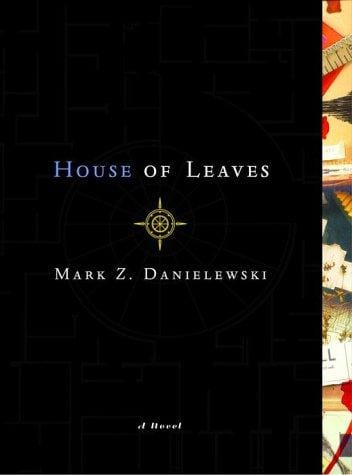Unraveling "House of Leaves": Summary, Themes and Reading Guide
Discover the plot, themes and innovative structure of Mark Z. Danielewski’s House of Leaves in this concise yet thorough 800-word reading guide.

Introduction
Mark Z. Danielewski’s "House of Leaves" has earned a near-mythic reputation since its publication in 2000. Part horror story, part academic satire and part love letter to experimental literature, the novel defies traditional genre labels. Its sprawling footnotes, color-coded words and labyrinthine page layouts invite readers to become explorers, forcing them to question the stability of text, narrative and even sanity. This article offers an 800-word guide to the book’s plot, structure, major themes and lasting cultural impact, providing newcomers and seasoned fans alike with fresh insights.
Plot Overview
The surface story revolves around Will Navidson, a Pulitzer-winning photojournalist who moves into a seemingly ordinary Virginia house with his partner Karen and their two children. Soon, the family discovers an impossible hallway that materializes inside the home, leading to a vast, shifting labyrinth known simply as the Navidson Record. Navidson documents his exploration of the space, and his footage becomes the subject of a documentary that spirals out of control. Yet this is only one layer of the narrative. The reader encounters the documentary through a partially completed scholarly monograph written by a blind man named Zampanò. After Zampanò’s death, the manuscript is found and compiled by Johnny Truant, a tattoo-parlor apprentice whose footnotes reveal his own descent into paranoia while editing the text.
This triple narrative—Navidson’s film, Zampanò’s critique and Johnny’s commentary—creates a hall of mirrors where reality blurs. Are the house and its yawning corridors real, or is the whole saga a projection of Johnny’s trauma and substance abuse? Danielewski never offers a definitive answer, compelling readers to weigh contradictory evidence and become detectives themselves.
Multi-layered Narrative Structure
"House of Leaves" is often described as a story within a story within a story. Each layer uses a different voice, format and theoretical framework. Zampanò’s monograph mimics dry academic prose, complete with fictitious citations and competing scholarly arguments. Johnny Truant’s footnotes, written in a conversational style peppered with slang, interrupt the scholarly tone with personal confessions and fragmented memories. Meanwhile, transcripts of Navidson’s documentary and letters from Johnny’s institutionalized mother, Pelafina, add further angles. The competing layers create cognitive dissonance that invites re-reading and annotation, making the book feel alive and unstable.
Typographical Experimentation
Danielewski’s daring use of typography pushes the boundaries of what a novel can do on the printed page. Some pages contain only a single word positioned at an odd angle, forcing readers to physically rotate the book. Others feature multiple columns, mirror writing or colored text—most famously, every instance of the word “house” appears in blue. The physical experience of turning, flipping and deciphering the pages parallels Navidson’s perilous navigation of the maze. In addition, blank spaces create “breathing rooms,” amplifying suspense and offering a momentary escape from textual overload. The novel’s layout thus becomes an integral part of its meaning, reinforcing themes of spatial disorientation and psychological fragmentation.
Major Themes
The Elastic Nature of Reality
At its core, "House of Leaves" questions the stability of reality. The house’s interior defies the laws of physics, expanding and contracting at will. Similarly, Johnny’s psyche fractures as he edits Zampanò’s work, leaving readers unsure whether his hallucinations are supernatural or the product of trauma and addiction. The novel suggests that reality is subjective, shaped by perception, memory and story.
Documentation and Storytelling
Danielewski interrogates the act of documentation itself. Navidson’s obsession with filming the hallway mirrors Zampanò’s meticulous footnoting and Johnny’s erratic journaling. Each character seeks to impose order on chaos through recorded evidence, yet every layer introduces fresh distortions. The novel thus critiques both academic authority and the reliability of personal narrative.
Love and Loss
Beneath the intellectual puzzle lies an emotional core: the fragile relationship between Navidson and Karen. Their struggle to survive the house mirrors their struggle to stay committed. The maze can be read as an external manifestation of their emotional distance, while their eventual reunion underscores the healing power of connection. Likewise, Johnny’s unresolved grief over his mother’s mental illness hints that personal loss can spawn labyrinths of the mind.
Tips for New Readers
Approaching "House of Leaves" can feel daunting, but several strategies make the journey rewarding. First, resist the urge to consult online analyses immediately; instead, allow the book’s puzzles to resonate. Second, read the footnotes as they appear—pagination tricks often serve narrative purposes. Third, consider using sticky notes or highlighters to track recurring motifs such as echoes, measurements and the color blue. Finally, read with a friend or discussion group; vocalizing theories can illuminate hidden connections.
Legacy and Influence
Since its release, the novel has accrued a devoted cult following and influenced a broad range of media. Musicians like Poe—Danielewski’s sister—integrated lyrical references into albums, while video games such as "Control" echo its themes of impossible architecture. Academics analyze the text in courses on postmodernism, media studies and horror literature. Its interactive design prefigured the rise of alternate-reality games and transmedia storytelling, demonstrating that print can compete with digital innovation.
The book’s success also paved the way for other typographically adventurous works, including S. by Doug Dorst and J.J. Abrams, and "Night Film" by Marisha Pessl. "House of Leaves" remains a touchstone for writers aiming to blur form and content, proving that experimental fiction can achieve both critical acclaim and commercial success.
Conclusion
More than two decades after publication, "House of Leaves" continues to mystify, terrify and inspire. Its blend of psychological horror, metafictional critique and formal innovation invites endless interpretation, ensuring its place in the literary canon. Whether you read it for chilling suspense, intellectual challenge or emotional resonance, the novel’s shifting corridors promise discoveries long after you close the final cover.



